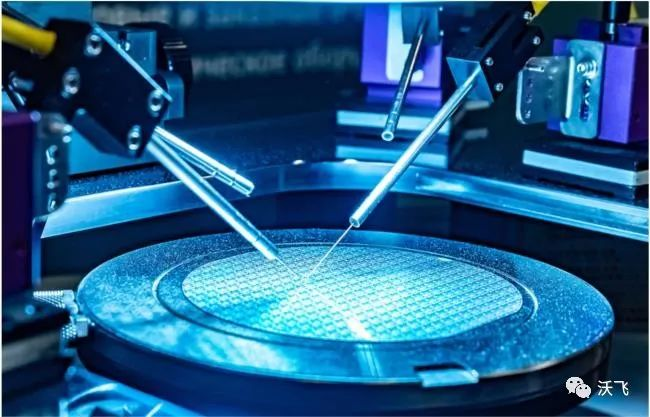How gases are used in semiconductor manufacturing
The semiconductor industry is a huge global industry, which continues to grow
every year, which means that the demand for high-purity gases will increase
accordingly.
Having a reliable supply of high-purity gas is essential for semiconductor manufacturing, especially in advanced technologies such as smart phones and autonomous vehicle.
The process of producing integrated circuits is very complex, requiring more than 30 different gases at all stages, which makes the range of gases used one of the most widely used in any industry.
Gas is an important part of semiconductor manufacturing, because it can produce chemical reactions required to shape the electrical characteristics of semiconductors. Due to its complexity, the gas used at each stage of the manufacturing process needs to be accurate and accurate to correctly configure the semiconductor.
With the continuous development of the semiconductor industry, the gases used in the process are also developing. Some of the core gases used include nitrogen, oxygen, argon and hydrogen. We will discuss their roles in the manufacturing process in depth.

Nitrogen
Due to its availability and inertness, nitrogen is the core gas used in each step of the semiconductor manufacturing process, but its main use is in the purging stage. At this stage, nitrogen is used to flush each channel and pipe network to remove any oxygen in the machines and tools, so as to protect them from other gases that may contaminate the process.
In addition, most semiconductor factories are equipped with nitrogen generators on site due to the large use of nitrogen in the whole process. More importantly, with the production of high-tech smartphones and other technologies, it is imperative to keep the cost low while trying to meet the high demand.
You can say that nitrogen keeps tools, spaces and pipes away from any potential moisture, chemical contaminants and particles. It is an essential gas, which is used throughout the process from the beginning to the end, which is no wonder why they install generators on site.
Oxygen
As you know, oxygen is an oxidant, so it is essential to produce a deposition reaction. It is used to grow silicon oxide layers for various elements in the process, such as diffusion masks.
When oxygen is used for semiconductor manufacturing, the gas must be ultra-high purity to prevent any impurity from affecting the production and performance of the device.
During the etching process, oxygen is also used to remove any additional material waste generated. It can also be used to make any etching pattern permanent.
Finally, oxygen also helps to neutralize reactive gases through oxidation reactions that may change product quality. Therefore, like nitrogen, oxygen also helps to ensure that no pollution occurs.
Argon
Argon is mainly used for the deposition and etching process in the ultraviolet lithography laser, and is used to make the smallest pattern on the semiconductor chip.
During the manufacturing of the required silicon wafer, argon gas is used to protect the silicon crystal formed on the wafer from any potential reaction with oxygen and nitrogen during the high-temperature growth process.
Because argon is also a very inert gas, it is used to provide a non reactive environment for metal sputtering deposition. Sometimes the reactivity of nitrogen is too strong, which will lead to the formation of metal nitrides.
In addition, liquid argon is used with tools to clean the smallest and most fragile chips.
Hydrogen
The use of hydrogen in semiconductor manufacturing may increase due to higher demand. Especially in the photolithography stage, hydrogen is used to react with chemical tin to produce tin hydride. Tin hydride is required so as not to accumulate on expensive optical elements.
It is used for epitaxial deposition of silicon and silicon germanium in the deposition process, and also for surface preparation by annealing process.
Hydrogen is used to create a new oxide layer to modify the existing thin film. This process occurs in high-pressure and high-temperature environments, which means that the control of flow rate, temperature and pressure is very important.
In addition, hydrogen is also used in the doping stage to help control decomposition, because the gas used in this process is highly toxic. So many that they need to be stored in a device that can prevent leakage.
Diborane is also a chemical used in the doping process, but due to thermal instability, it will slowly decompose, so hydrogen is needed to help stabilize it.
Semiconductors in daily life
Semiconductors are used in all kinds of daily equipment, such as computers, smartphones, televisions, and also in advanced technologies, such as medical equipment, military systems and many other applications.
They are part of our daily life and we don't notice them because they exist in the devices we use every day. Without semiconductors, we will not be able to do many things. With the development of semiconductor technology, they will become more reliable, intelligent and compact.
From communication, transportation and entertainment, these are only a small part of what semiconductors have done for us. They will power future technology and innovation, enabling us to do things we have never imagined.
 EN
EN
 AR
AR
 HR
HR
 CS
CS
 NL
NL
 FR
FR
 DE
DE
 IT
IT
 JA
JA
 KO
KO
 NO
NO
 PL
PL
 PT
PT
 RO
RO
 RU
RU
 ES
ES
 SV
SV
 TL
TL
 ID
ID
 VI
VI
 MT
MT
 TH
TH
 TR
TR
 AF
AF
 MS
MS
 AZ
AZ

